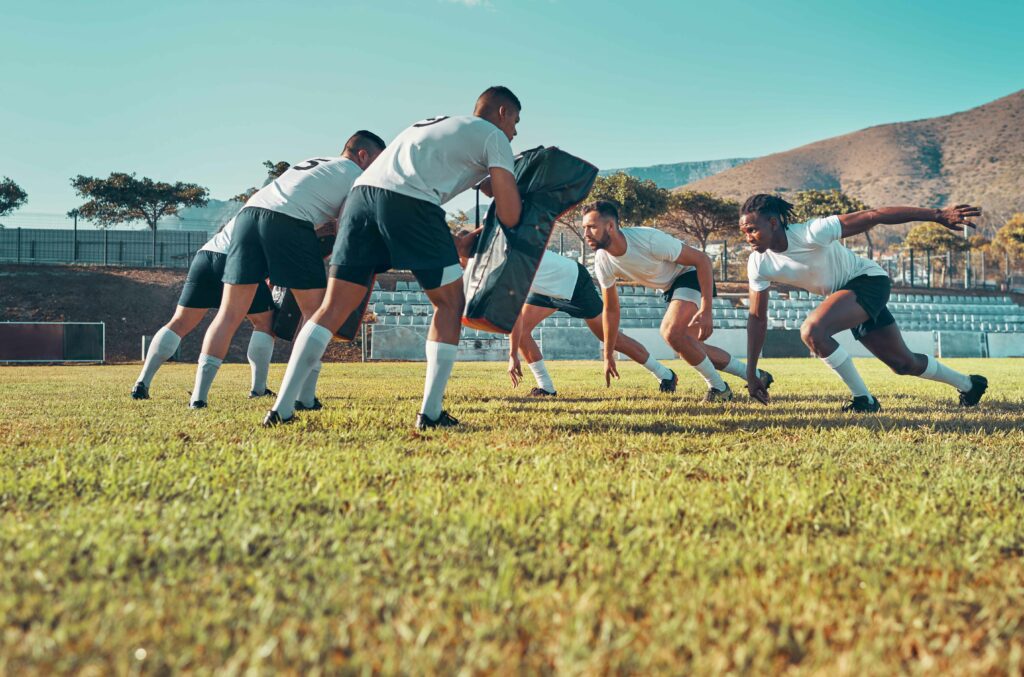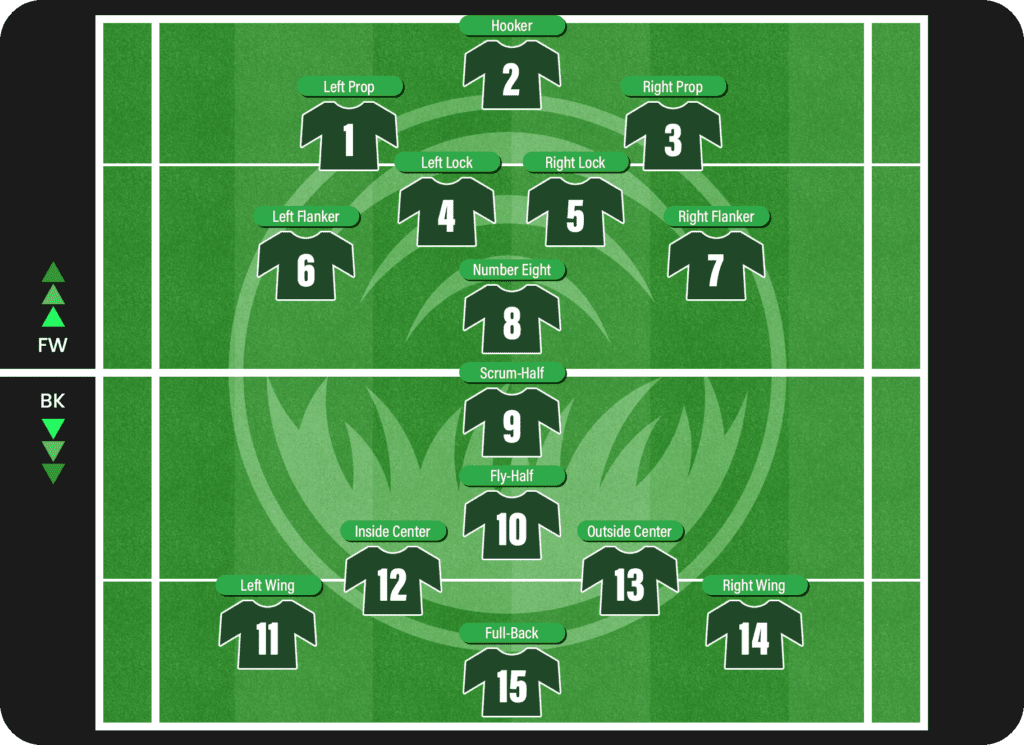Rugby is a popular sport that many people enjoy watching. But do you know how to play it? In this blog post, we will explain everything you need to know on how to play rugby. We’ll go over the basics of the game, such as what the goal is and how long a match typically lasts. Then we’ll talk about the different positions in a rugby team and how players score points. If you’re interested in learning more about this exciting sport, keep reading!
The definition of Rugby
Rugby is a physical, full-contact sport that evolved as a variation of soccer. It is played with two teams of fifteen players on a rectangular field and with an oval-shaped ball. The objective of the game is to score more points than the other team by carrying the ball across the opponents’ goal line and touching it down to the ground. Players can only pass the ball backwards or sideways and no forward passes or blocks are allowed. Kicking is the only method by which both teams may move the ball forward. The team with the most points at the end of the game wins the game.

Rugby field
The rugby field is probably the most important of a rugby game. Without the surface to play the game would not be possible.
Rugby is played on a rectangular shaped field with H-shaped goalposts at each end. A rugby field could be maximum 100m in length from goal line to goal line, with a 22m maximum space in the in-goal area and maximum 70 meters in width.
TURF TANK PRO TIP:
Figuring out the correct dimensions of the field is a difficult job when done manually. The Turf Tank autonomous line marking robot paints a rugby field all by itself, without a manual operator.
How long is a rugby game?
A match typically lasts for 80 minutes and is divided into two halves of 40 minutes each. There is a 15-minute break at halftime. All these, along with stoppages make a rugby match to in reality last up to 100-120 minutes.
However, the game will not automatically stop when the clock hits eighty minutes. If a team has possession of the ball, the game will continue until they kick the ball out of play, score, or commit a foul.
Generally, rugby games can end up in a tie, if the score is equal when the time runs out. However, there are certain situations when a winner must be determined. That is when extra time is awarded and the teams have to play 20 minutes extra.
Depending on the type of rugby, there could be variations in how long a rugby game could last. For example, rugby sevens matches last only 14 minutes, consisting of two seven-minute halves with a two-minute break in between. These is a quick variation, which allows teams to play two or three matches a day.
How many players in rugby?
There are fifteen players on each team, which make 30 players in total on the field. In addition to the fifteen players on each team, there are also eight substitutes who can be used throughout the course of the game to replace players who are injured or tired.
The fifteen players on each team are divided into eight forwards and seven backs. The forwards are generally larger and stronger than the backs, and their main role is to win possession of the ball and protect it from being tackled by the opposition. The backs are faster and more agile, and their main role is to score points by running with the ball or kicking it through the opponents’ goal posts.
Rugby positions explained
Rugby is considered a game for all shapes and sizes. Each position in rugby requires a different set of physical skills, and this diversity makes the game accessible to all. These are the different positions in rugby

Props
The two props are the first forwards in each row. They are usually the largest and strongest players on the team. The main job of the props is to ensure their side of the scrum does not move backwards, while also supporting the hooker’s body weight allowing him or her to see and strike the ball when it is put into the scrum.
Hookers
The hooker is the player in the forward with the decision making. His or her role is to coordinate the timing at the scrum and win possession of the ball, by hooking the ball back through the prop’s legs.
Number 8
Number 8 together with the two flankers form the back row. Number 8 is focused on support play, tackling and ball-carrying. No.8 is also the only player from the forwards who is allowed to pick the ball up from the base of the scrum.
The final seven positions make up the backs. These are the players who tend to be more skilled and faster than the forwards, and they are responsible for scoring most of the team’s points.
There are seven backs in a team made up of two wingers, two centres, a fullback and a scrum half.
Wingers
The wingers are the players that play on the outermost part of the pitch. They have one main responsibility when getting the ball – to rugn fast! That is why the wingers are the players with the most speed on the team. Their main job is to score tries by running down the sidelines and avoiding being tackled. However, they also need to be able to defend well, as they are often the last line of defense.
Full-back
The full-back is the player who is responsible for stopping the opposition from scoring. He or she needs to have good speed in order to chase down players who are trying to score, and also needs to be good at kicking the ball clear of danger. The full-back is also the last line of defense, so they need to be able to make quick decisions about when to tackle and when to let the ball go.
Locks
The second row is made up of two locks. These are usually the tallest two of the team and they line up opposite the other team’s locks. Locks are responsible for winning lineouts, which is why they often have the best jump. They also provide extra height to the scrum, making it harder for the opposition to push them backwards.
Flankers
The flankers are the final two forwards and they make up the back row. The flankers have less specific responsibilities, as they are used for a variety of tasks and need to have a wide range of abilities. These players tend to be more mobile than the other forwards, as their job is to cover a lot of ground around the pitch.
Scrum-half
The scrum-half is the player who provides the link between the forwards and backs. He or she is responsible for receiving the ball from the forwards at scrums and lineouts, and then distributing it to the backs. The scrum-half also need to be aware of what is going on around them at all times, as they need to make quick decisions about where to pass the ball.
Fly-half
The fly-half is the player who dictates play for the backs. He or she makes most of the team’s decisions on attack, and needs to have good vision in order to see opportunities that other players may not see. The fly-half also kicks for goal, so they need to have good accuracy.
Centers
The centers are responsible for both attacking and defending. They need to be able to run with the ball and break through tackles, but also need to be good at tackling themselves in order to stop the opposition from scoring.
How to score in rugby?
There are several ways to score points in rugby. If you are familiar with the scoring system in American football, rugby scoring won’t be too hard to understand.
Points
| Try | 5 points |
|---|---|
| Conversion | 2 points |
| Penalty Kick | 3 points |
| Drop Goal | 3 points |
Try
A try is worth 5 points and is the main way to score in rugby. To score a try, the attacking team must touch the ball to the ground in the opposing team’s end zone. The team is then awarded a conversion kick, which is worth 2 additional points.
Conversion
A conversion kick is taken after a team scores a try. The conversion kick is worth 2 points and is taken from anywhere on the field of play, in line to where the try was scored and parallel to the touch line. That is why team aim to score tries as close as possible to the goalposts. The team that just scored the try gets one attempt at the conversion kick.
Penalty Kick
A penalty kick is awarded when a team commits a serious infraction and is worth 3 points. Penalty kicks are taken from anywhere on the field of play, perpendicular to where the infraction occurred. The team that did not commit the infraction gets one attempt at the penalty kick.
Drop Goal
A drop goal is worth 3 points and is scored when a player kicks the ball through the opposing team’s goalposts. A drop goal can be attempted at any time during play and does not require a stoppage in play.
Conclusion
Rugby is a complex sport that requires speed, strength, and endurance. However, at its core, it is a simple game that anyone can understand and due to the different set of abilities it involves it is a sport which can fit all sizes and shapes. Now that you learned more about the rugby rules you now know how to play rugby so go out there and enjoy the sport of rugby!
Curious to see how easy you can paint rugby fields?



